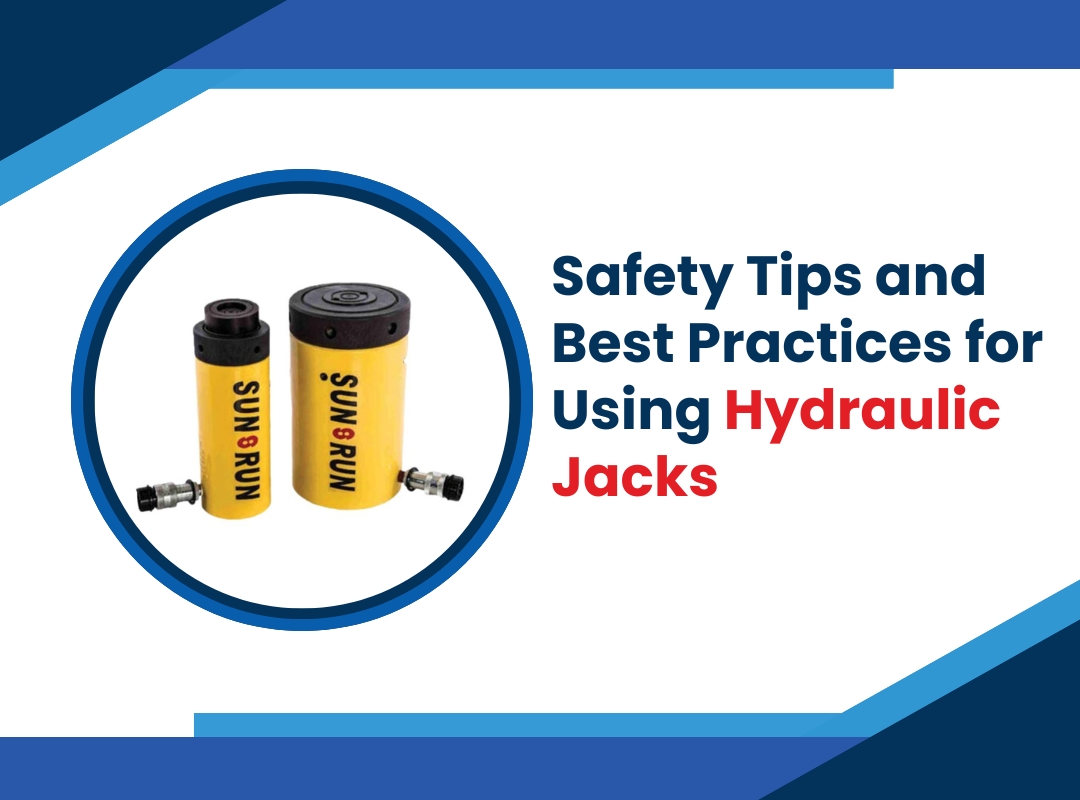Hydraulic jacks are strong tools very necessary for raising big vehicles and machinery in automotive work places, building areas, and industrial centers. These devices use hydraulic force to create big lifting power, so they can’t be done without doing different fixing or upkeep jobs. Knowing the right safety rules and best ways of doing things is critical to stop mishaps from happening while making successful operations possible.
Understanding Hydraulic Jack Types
Different hydraulic jacks have assorted uses, such as bottle jacks which are for raising things vertically and floor jacks that cater to car-related jobs. Each version comes with unique weight limits, lifting capabilities, and design traits. Picking the right jack according to your requirement is a primary procedure in attaining safe usage. Always check that the jack’s limit is more than the weight you want to raise.
Pre-Operation Inspection
Before you use hydraulic jacks, it is very important to do a proper inspection. Look for any oil leaks, cracks on the housing or damage in the lifting part. Make sure every single component can move without difficulty and all safety elements work as they should be. Examine the level and state of the hydraulic fluid, refill or change it if required. A jack that is properly maintained is a safe jack.
Proper Setup and Positioning
Position the jack on a flat, solid ground able to bear both the jack and burden. Clean up the workspace from litter and hurdles. Locate the lift points suggested by the production company on vehicle or apparatus. Wrong placement of jack might result in unsteadiness or harm to the load being lifted, which could lead to risky circumstances.
Also Read: Most Common Hydraulic Jack Problems
Safe Operating Procedures
Operating hydraulic jacks, you need to first place the jack correctly under the designated lifting point. Make sure the load is well balanced and centered on the lifting pad. Lift up slowly and constantly, keeping an eye out for any signs of instability. Never exceed the jack’s rated capacity or maximum lifting height.
Using Jack Stands
Do not only depend on hydraulic jacks for holding up a lifted load over a longer duration. Always apply suitable jack stands as an additional backup system. Arrange jack stands on firm, even surface and set them at support spots suggested by the manufacturer. Lower the load onto the stands gradually and ensure they’re properly seated.
Environmental Considerations
Temperature, weather conditions and surfaces for work make a big difference to jack safety. Very hot or cold temperatures can change how hydraulic fluid performs. When it is wet or there are ice conditions, the danger of slipping goes up. Always make sure to work on firm ground and apply the right support materials if needed for stability.
Communication and Workspace Management
When you are using hydraulic jacks in a group, it’s very important to communicate clearly. Make sure that everyone knows where the designated work areas are and what their tasks involve. Use spoken instructions or hand movements for synchronizing lifting activities. Keep unnecessary personnel away from the lifting area to minimize risk.
Emergency Procedures
Learn emergency procedures and make sure you understand them before starting any work. Be aware of how to safely bring down a load if by chance the lift or jack fails. Keep numbers for contacting in case of emergencies close at hand, easy to get hold of when needed. Have correct first aid stuff and fire extinguishers close by. Fast reply to emergencies can stop small problems from becoming big disasters.
Maintenance Requirements
Regular upkeep guarantees dependable performance of the jack. Monthly checks should be done on hydraulic fluid levels, and changing of the fluid must occur every year or according to the maker’s suggestion. Parts that move need regular lubrication. After you use the jack, clean it and keep it in a good place. Write down all work done on maintenance and checks for later look-up.
Also Read: Signs That Signal The Need For Hydraulic Jack Repair
Training and Certification
Training is very important for all who use hydraulic lifting equipment. Make sure every operator understands correct ways of lifting, safety steps and the restrictions of this equipment. Think about starting a certification system for operators. Regular refresher training helps maintain safety awareness and updates operators on new procedures.
Common Mistakes to Avoid
Many usual errors can cause accidents when utilizing hydraulic jacks. These are, putting too much load on the jack, operating under loads that aren’t supported, using equipment that is damaged and incorrect placement of things. Knowing about these possible risks assists those who operate them to steer clear from hazardous situations and keep a secure working place.
Documentation and Record Keeping
Keep precise notes about the inspection of equipment, activities related to maintenance and training given to operators. Write down any happenings or near accidents for recognizing trends and making better safety measures. Ensure you have manuals of devices as well as safety rules easily accessible for consultation.
Conclusion
For safe use of hydraulic lifting machines, it is important to pay attention to details, comply strictly with safety rules and get the right training. Operators can reduce danger and provide efficient and secure lift operations by adhering to these standards and best practices. Keeping up regular maintenance, receiving proper training frequently, being vigilant consistently are all very essential for accident prevention measures and also aids in promoting a secure working atmosphere.
Remember that safety is a continuous process which needs constant focus and enhancement. Always be aware of the latest safety guidelines and equipment improvements. When using hydraulic lifting tools, always put safety first before speed or comfort.


